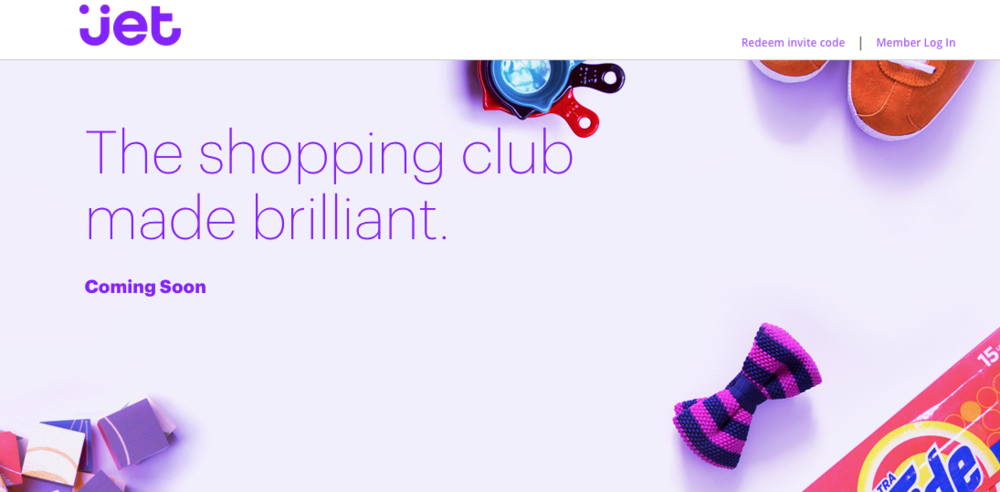Although our consulting practice is built around helping businesses sell more on Amazon, I strongly believe that Amazon won’t forever maintain its incumbent position in large-scale e-commerce. Why? The business opportunity is too big for other companies to ignore.
Amazon has built its competitive advantage around:
-
A ridiculously efficient logistics and fulfilment system, developed through investment in its own fulfilment warehouses
-
World-class customer service
-
The ‘Prime’ program: a semi-captive group of loyal, high-volume purchasers
It is possible to replicate all these advantages, but they do require significant financial resources. Any legitimate challenger must be extremely well-funded and led by people with significant e-commerce chops. Based on this criteria, I see two credible challengers that are poised to enter the market:

Image: Screenshot from Jet
JET
If you haven’t heard of Jet, you soon will. Jet received $220 million in investment funding and will soon launch a $100 million marketing blitz.
Jet is positioning itself as a low-cost platform, in contrast to Amazon, which in recent years has been straying from a cost value proposition and toward convenience.
So how will Jet keep prices low? Jet is powered by a smart shipping logistics algorithm and network of suppliers. Its cart will calculate which supplier can ship your order at the lowest cost, based on your zip code, and present additional items that can ship from the same warehouse. If members waive their right to return or replace the item, they receive an additional discount.
Compare this with Amazon, whose ‘convenience’ play allows endless no-questions-asked returns (costly to sellers) and ships orders from its own warehouses, as well as millions of sellers around the country. Jet will win the price war by building a system around shipping logistics rather than convenience.
Jet has the money, the strategy, and it also has the leadership talent: CEO Marc Lore founded diapers.com and e-commerce site Quidsi, which was later sold to Amazon for $500 million.
Alibaba
Just last month, Chinese e-commerce behemoth announced plans to launch a service in the US to challenge Amazon’s cloud-based hosting platform, Amazon S3. This move, designed to “to test the waters” in a new market, could easily uncover an opportunity for Alibaba to expand into e-commerce in the US too.
After all, in China, Alibaba is Amazon. In fact, it facilitates far more transactions than Amazon does. Alibaba’s e-commerce chops is second to none, even Amazon.
With is $200 billion valuation, Alibaba is not without the capital to quickly launch a ruthless challenge to Amazon’s e-commerce offering.
What does this mean for consumers?
Consumers generally benefit financially from increased competition in any marketplace, but especially consumer goods. Though low prices are relatively easy to find through comparison shopping at niche retailers, Amazon uncovered and developed market demand for an all-in-one platform that rewards repeat purchases, and that is the model that these challengers will likely adopt.
In either of these challenger scenarios, consumers will choose between convenience (Amazon) and price (challenger).
Implications for Sellers
Any brand selling on Amazon should pay close attention to developments from challenger companies like Jet and Alibaba. In fact, Jet is accepting submissions for products and brands right now. Being part of experimental new platform may cost businesses some time and money, but it could be worth the effort to be where your competitors are not (yet).
.png)
